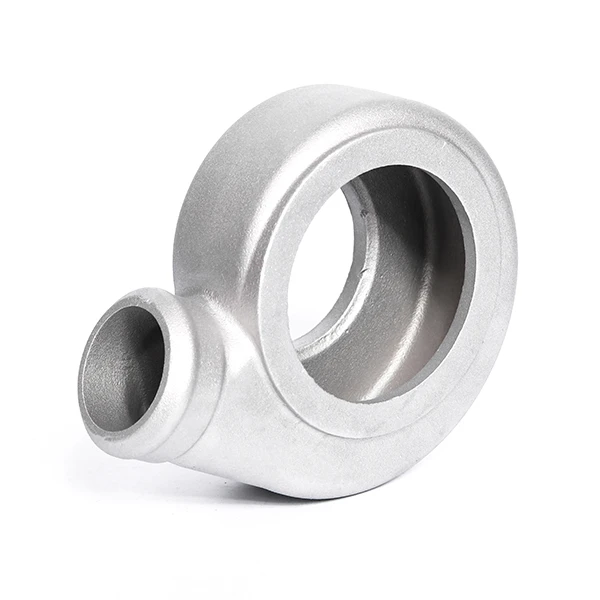Mobile:+86-311-808-126-83
Email:info@ydcastings.com
English
Optimizing Die Casting Operations for Enhanced Efficiency and Quality Control
The Art and Science of Die Casting Exploring Operations and Efficiency
Die casting is a manufacturing process that has gained immense popularity in various industries due to its ability to produce complex geometries with high precision, excellent surface finish, and overall cost-effectiveness. This process involves injecting molten metal into a mold, where it solidifies to create a predefined shape. While die casting has numerous advantages, the operational efficiency of the process is crucial to maximizing productivity and minimizing waste. In this article, we will explore the importance of operational efficiency in die casting and discuss some of the best practices to enhance performance.
Understanding Die Casting Operations
Die casting primarily employs two metals aluminum and zinc. Each metal has its specific properties and uses, influencing the choice of material based on the end application. Aluminum die casting is favored for its lightweight and corrosion-resistant components, commonly found in the automotive and aerospace industries. Zinc die casting, on the other hand, is valued for its strength and ease of machining, making it suitable for hardware and consumer products.
The die casting process can be broken down into several critical stages preparing the die, melting the metal, injecting the molten metal into the die, cooling, and ejection. Each step requires meticulous attention to detail to ensure that the final product meets the desired specifications.
The Importance of Operational Efficiency
Operational efficiency in die casting directly affects production speed, cost, and product quality. An inefficient process can lead to delays, increased labor costs, and high scrap rates. To maintain competitiveness in the market, manufacturers must seek ways to optimize their die casting operations.
Key factors that affect operational efficiency in die casting include
1. Die Design A well-designed die optimizes the flow of molten metal and reduces the cycle time. Designing dies with proper cooling channels can enhance the cooling efficiency, thus shortening the overall production cycle.
2. Machine Setup Ensuring that die casting machines are calibrated and maintained is vital. Proper machine setup not only supports consistent production quality but also minimizes damage, which can lead to costly downtime.
3. Material Choice The selection of the right metal alloy can impact the performance of the die casting process. Opting for the right alloy can help in achieving better fluidity, lower melting points, and reduced shrinkage rates.
ops die casting

4. Automation Integrating automation into the die casting process can significantly enhance operational efficiency. Automated systems can handle repetitious tasks such as material loading, part inspection, and packaging, thereby reducing labor costs and increasing throughput.
5. Quality Control Implementing a robust quality control system is essential for maintaining product quality. Regular inspections and testing of components can help identify defects early in the process, which in turn reduces the costs associated with rework and waste.
Best Practices for Optimizing Die Casting Operations
To achieve optimal efficiency in die casting operations, manufacturers should consider the following best practices
- Regular Maintenance Establishing a regular maintenance schedule for equipment and dies ensures that potential issues are addressed before they lead to production downtime.
- Training Workforce Investing in workforce training equips employees with the necessary skills to operate machines efficiently and adhere to quality standards.
- Data-Driven Decision Making Collecting data throughout the die casting process can provide insights into performance trends. Analyzing this data can help identify bottlenecks and areas for improvement.
- Continuous Improvement Embracing a culture of continuous improvement encourages teams to seek innovative solutions to enhance efficiency and product quality. Regularly reviewing processes and soliciting feedback from employees can lead to significant operational benefits.
Conclusion
In conclusion, operational efficiency in die casting is paramount to driving productivity and reducing costs. By focusing on die design, machine setup, material selection, and leveraging automation, manufacturers can streamline their processes and achieve higher-quality outputs. As industries continue to evolve, the need for efficient and sustainable manufacturing practices will only amplify, making it imperative for die casting operations to adopt best practices that harness both art and science for optimal results.
-
Materials Used in Manufacturing Cap End Pipe FittingsNewsNov.24,2025
-
Material Properties of CF8M CastingNewsNov.24,2025
-
How to Inspect Pump Cap Ends for DamageNewsNov.21,2025
-
Backward Curved Impeller – Efficient Airflow Solutions for Industry | YD CastingsNewsNov.21,2025
-
Automobile Water Pump - Efficient, Quiet, Durable & ElectricNewsNov.21,2025
-
Impeller for Pumps – High-Efficiency, Durable, OEM-ReadyNewsNov.21,2025











